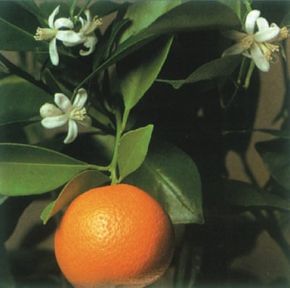The calamondin orange tree is an excellent choice for gardeners looking for a low-maintenance yet rewarding horticultural experience. This tree thrives exceptionally well in warm climates, showcasing its love for the sun and heat. However, its remarkable hardiness sets it apart from its citrus counterparts; it can withstand cooler temperatures that would typically be challenging for other citrus trees.
Use Well Draining Potting Soil and Lots of Light
In terms of potting soil requirements, the calamondin orange tree favors well-drained soil. This preference ensures that the roots remain healthy and free from water-logging, which can lead to root rot – a common issue in citrus trees. There should be enough moisture present to nourish the plant while allowing excess water to drain away efficiently.
Sunlight plays a crucial role in the health and fruit production of these fruit trees. It requires full sun exposure for optimal growth. This means planting the tree in a location where it can receive at least six to eight hours of direct sunlight daily. Such exposure ensures vigorous growth and a bountiful harvest of the slightly sour fruits.
Easy Watering, Fertilizing, and Pruning
Regular deep watering is vital to maintain the tree's health, particularly during its flowering and fruiting stages. However, over-watering can be as detrimental as under-watering, so monitoring the soil's moisture level is key. During dryer seasons or in especially hot climates, increasing the frequency of watering may be necessary to compensate for the quicker evaporation of moisture from the soil.
Fertilization is another aspect of care that can significantly influence the growth of the calamondin orange tree. Using a citrus-specific fertilizer is advisable as it is formulated to provide the right balance of nutrients needed for citrus trees. Using citrus fertilizer occasionally, especially during the growing season, can encourage healthier growth and better fruit yield.
Pruning, while seldom necessary, can be done to maintain the tree's shape and remove any dead or diseased branches. This occasional pruning helps in maintaining the aesthetic appeal of the tree and ensures that the plant's energy can produce fruit and healthy foliage.
